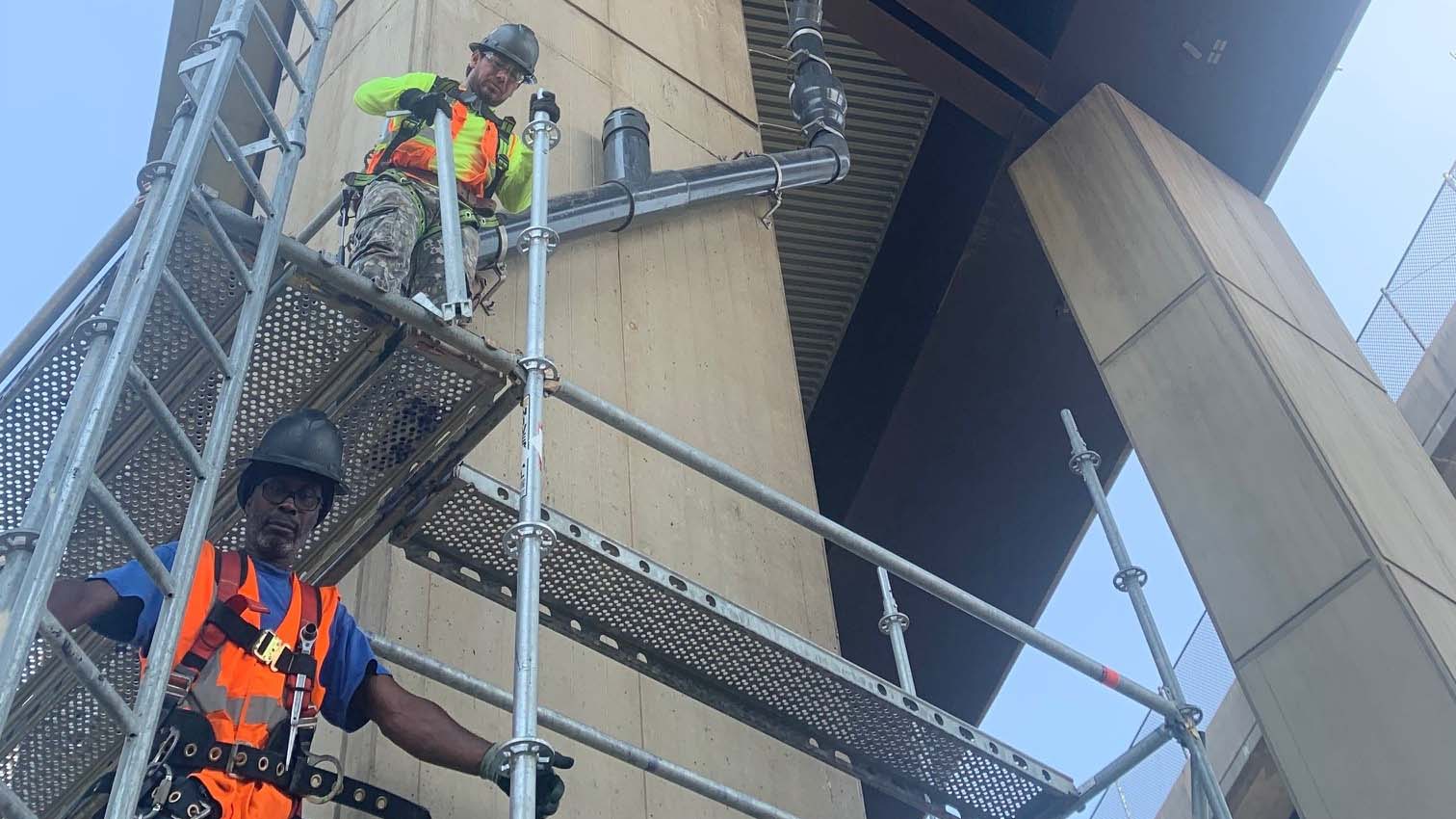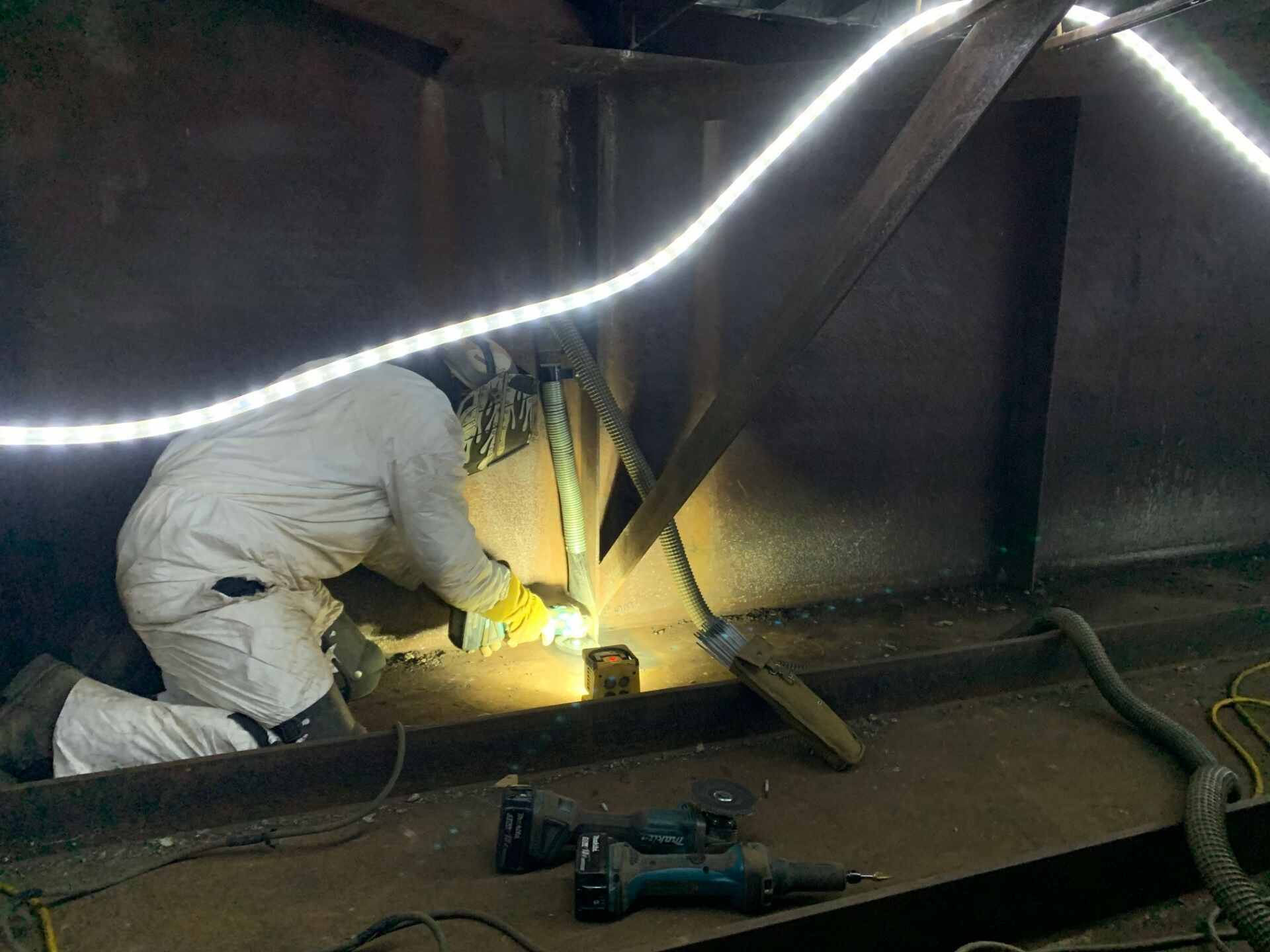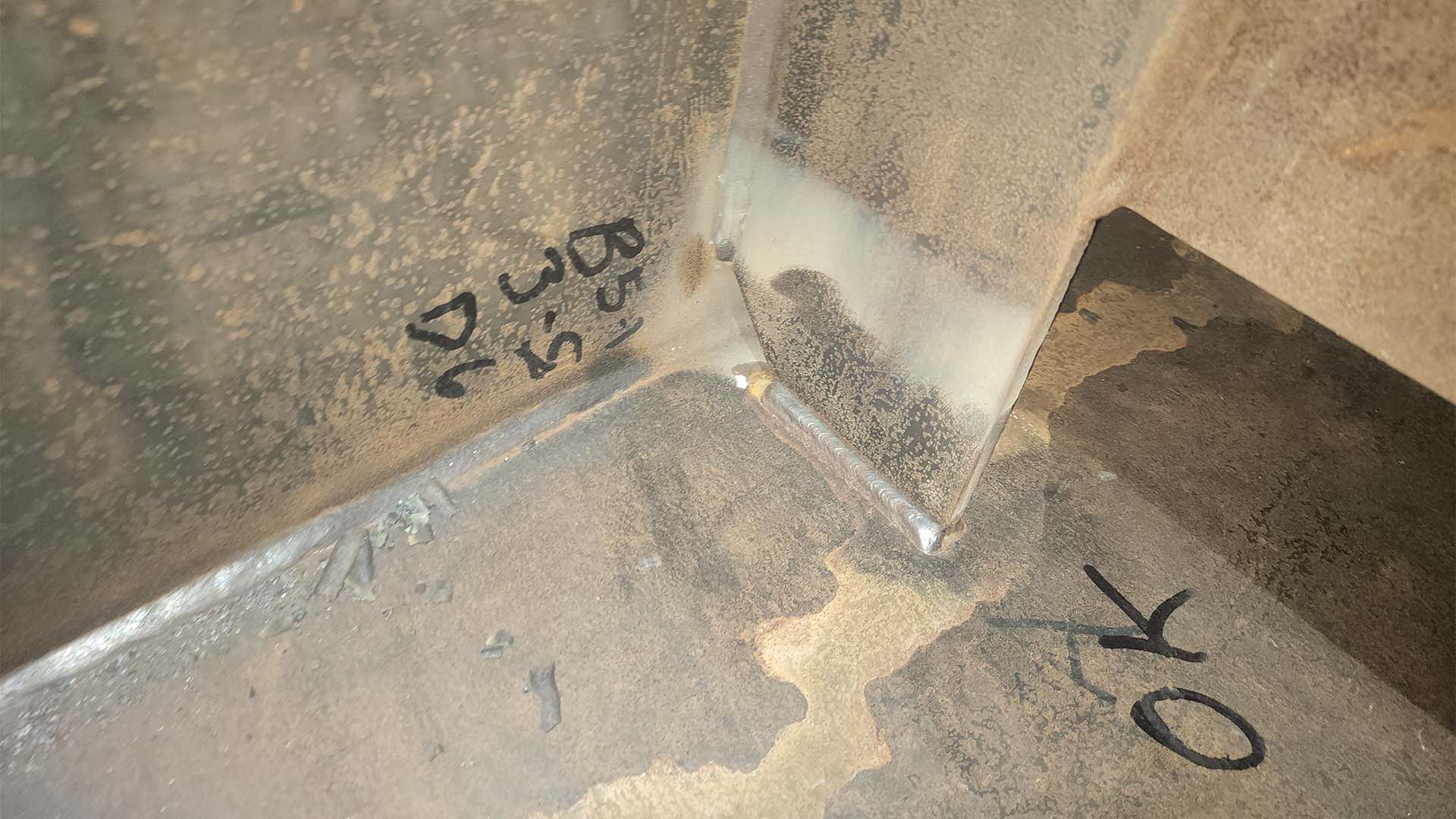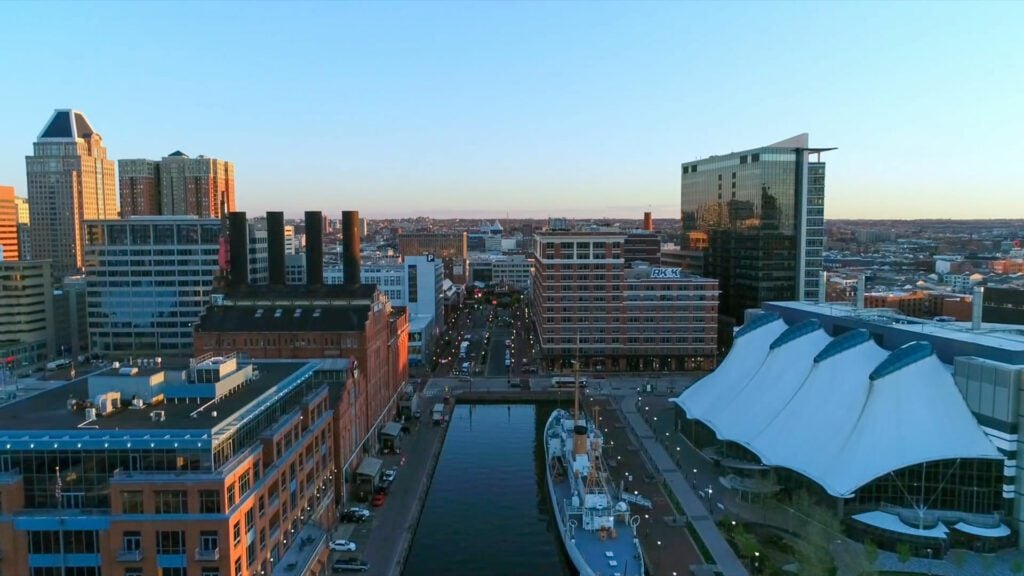RK&K’s Structures group managed the $5 million project for steel fatigue and drainage repairs for 19 steel box girders along I-95 and I-395 in south Baltimore for the Maryland Transportation Authority (MDTA), in addition to reducing impacts to the traveling public.

“The unique part of this project is that it was mostly preventative. 90% of the locations we retrofitted did not yet have any problems, but because of the type of connection, we knew it was going to crack at some point,” said Senior Project Delivery Leader Lori Magoon, PE.
Lori said when the bridges were designed in the late 1970s, it was industry standard to not weld the diaphragm connection plates to the tension flange of a girder to improve fatigue strength. She noted this practice led to early fatigue damage in the web-gab region (the small area between the portion of the diaphragm connection plate welded to the girder web and the remaining unwelded portion of the diaphragm connection plate down to the girder bottom (tension flange)) where distortion-induced, out-of-plane bending occurred. She added in the mid-1980s, this practice was changed to include the welds at the tension flange for these members.
The fatigue retrofits were designed following a comprehensive investigation, instrumentation program, and pilot study. They included the installation of welds between the diaphragm connection plate and girder bottom flange to reduce crack-causing distortion-induced stresses by up to 85%.

The fatigue retrofits were designed following a comprehensive investigation, instrumentation program, and pilot study.
“You never know when it’s going to happen, but it will happen. We think of it like a paper clip and how if you bend it enough, it will eventually break,” Lori noted.
She said MDTA spent a lot of time and money over the years, as contractors returned to the site year after year mobilizing to make singular fixes. As a result, the team collaborated with the client on a more comprehensive and proactive solution.
“Every time we go out, we may be disrupting traffic. We said, ‘Let’s just go in there and fix the problem so we don’t have to keep going out there,’” Lori added.
Welded retrofits were installed at the few known cracked locations as well as uncracked locations as a preventative measure. RK&K identified the Maintenance of Traffic (MOT) needs that would be required to implement the repairs and developed the required site-specific MOT and detour plans.
She noted that while cracks could appear in the future, the project greatly reduces future risk.
“If we hadn’t done these welds, it was a matter of time until they cracked. But because of how we reinforced it, we delayed that from happening or prevented it altogether.”

Welded retrofits were installed at the few known cracked locations as well as uncracked locations as a preventative measure.
Part of the project was also repairing the drainage system, to prevent corrosion inside the steel box girders. When it rains or snows, water and road salts are carried from the road into grates where it is carried off the bridge via discontinuous pipes that go through the box girders. Sometimes the collection pipes get clogged up with debris and the drainage would spill over into the boxes, and fill up, causing corrosion. Lori said the team collaborated on eliminating the possibility of drainage collecting inside the steel box girders as a solution.
“We made a closed system inside the steel box girders where, instead of having a disconnect in the pipe sections, we made this one continuous pipe,” Lori said. “There’s no way for water to get into the box now. We called this a ‘system preservation tactic,’ which prevents future damage that is otherwise unseen from outside the boxes. As an added benefit to ensure the pipes have a long service life, we used stainless steel that is corrosion resistant.”
Proactive solutions can help incorporate resiliency into a project, saving the client time and money.
RK&K, and Lori specifically, have been involved with rehabilitating these structures since 2009. Previous projects included addressing steel deterioration caused by water that had collected inside the box girders and arresting fatigue cracks.
“Hopefully this is the last time we return to this bridge,” Lori joked.
She added this project’s approach aligns with the increased focus on asset management.
“It’s unusual that an agency is able to spend a lot of money on a preventative effort. Because of limited funding, they usually are more focused on what’s currently broken and in need of immediate attention. However, MDTA was proactive with available funds, so that in the long run, it saves them money,” Lori said.


